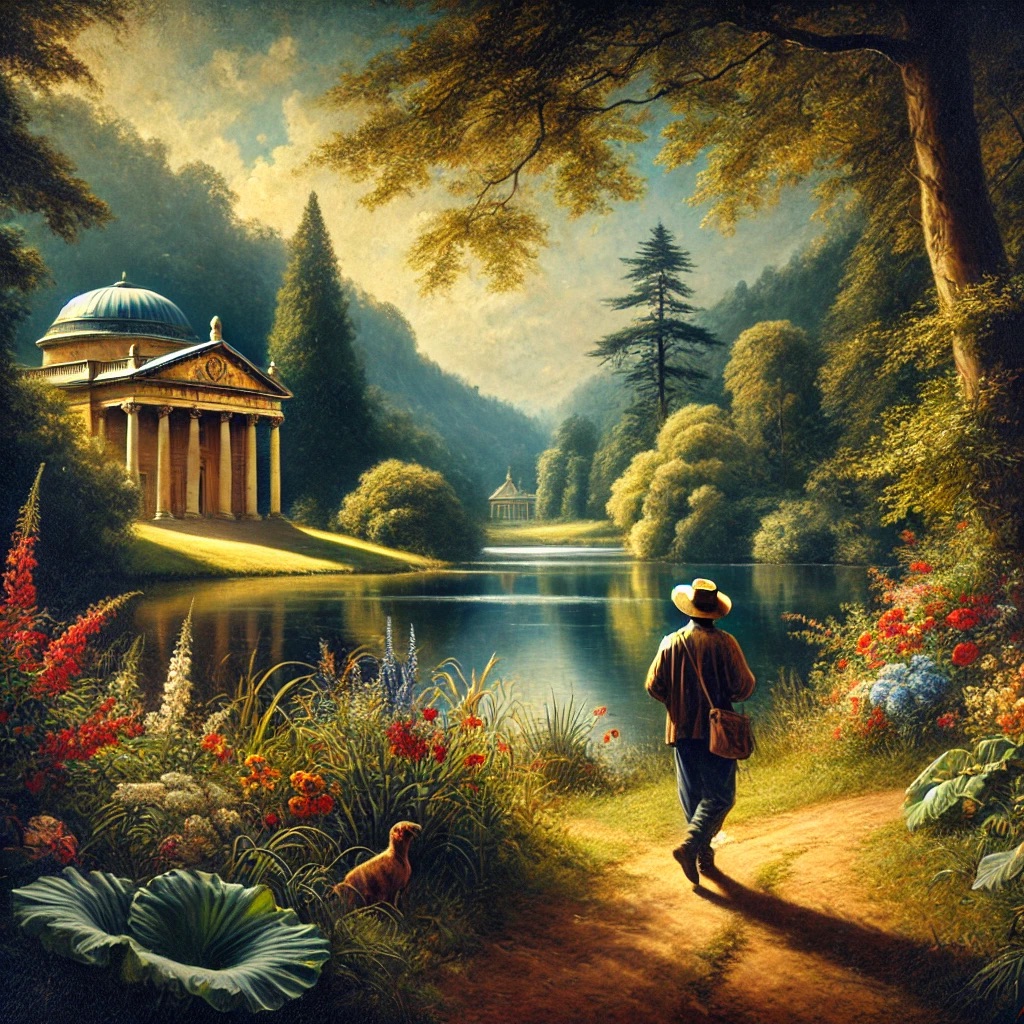ChatGPT: Stourhead is a renowned landscape garden located in Wiltshire, is celebrated for its naturalistic design, blending art and nature harmoniously.
Stourhead’s origins trace back to the early 18th century when the estate was purchased by Henry Hoare I, a wealthy banker. The initial house, built in a Palladian style, was completed in 1725. However, it was his son, Henry Hoare II (known as “Henry the Magnificent”), who transformed the estate into the celebrated landscape garden it is today.
The development of Stourhead garden began in the 1740s and continued for several decades. Inspired by the ideals of the English landscape garden movement, which sought to create naturalistic settings that imitated the pastoral landscapes found in classical art and literature, Henry Hoare II meticulously designed the garden.
Key features and developments include:
- Artificial Lake: Central to the garden is a large, serpentine artificial lake created by damming a stream. This lake is the focal point of the garden, providing stunning reflections of the surrounding landscape.
- Classical Temples and Structures: Influenced by his Grand Tour of Europe, Hoare incorporated classical architecture into the garden. Notable structures include the Pantheon, based on the Roman Pantheon; the Temple of Apollo, inspired by the Temple of the Sun at Baalbek; and the Temple of Flora.
- Grottoes and Follies: The garden features several grottoes and follies, including the Grotto, which contains statues of a river god and a nymph, and the Gothic Cottage, adding a sense of whimsy and surprise to the landscape.
- Planting and Landscape Design: Hoare planted a wide variety of trees, shrubs, and flowers, carefully selecting species to enhance the natural beauty of the landscape and provide year-round interest. The design included sweeping lawns, shaded walks, and strategically placed viewpoints.
- Evolving Design: The garden continued to evolve after Hoare’s death, with subsequent generations of the Hoare family making additions and modifications. The Victorian period saw the introduction of exotic plant species and further enhancements to the garden’s layout.
Stourhead is considered a masterpiece of landscape gardening, blending art, architecture, and nature to create a harmonious and idyllic setting. Today, it is managed by the National Trust and remains a popular destination for visitors, offering a glimpse into the grandeur and vision of 18th-century garden design.
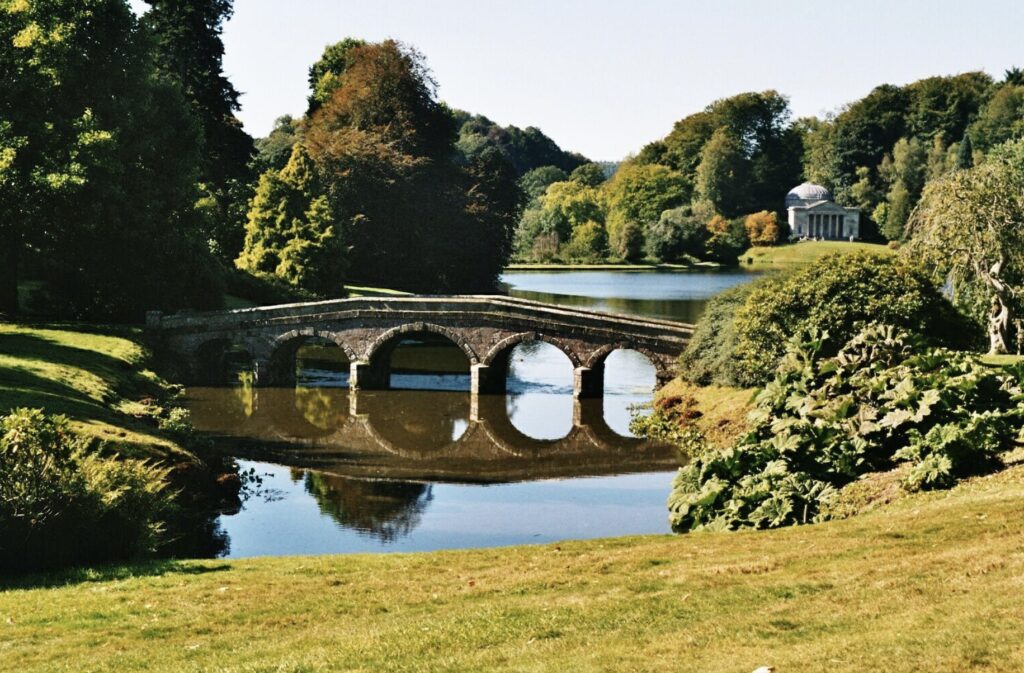
The English landscape garden style, also known as the English landscape park, emerged in the early 18th century as a reaction against the formal, symmetrical gardens of the Baroque era, such as those at Versailles. Its characteristics are:
- Naturalistic Design: The style emphasizes a more natural, informal appearance, often resembling an idealized version of the countryside. It avoids straight lines and formal geometric shapes, instead using sweeping curves and asymmetrical layouts.
- Sweeping Lawns and Meadows: Expansive, rolling lawns are a key feature, providing a sense of openness and continuity. These lawns often extend seamlessly into surrounding landscapes.
- Lakes and Water Features: Artificial lakes, serpentine rivers, and ponds are central elements, creating reflective surfaces and enhancing the sense of tranquility. Water features are designed to look natural rather than man-made.
- Groves of Trees and Woodlands: Groups of trees, often in clumps or irregular patterns, are strategically planted to frame views, provide shade, and enhance the naturalistic feel. Mixed woodlands add variety and depth to the landscape.
- Classical Temples and Follies: Inspired by ancient Greek and Roman architecture, classical temples, ruins, and other follies are placed throughout the garden. These structures serve as focal points and evoke a sense of history and romanticism.
- Winding Paths and Vistas: Meandering paths guide visitors through the garden, revealing a series of carefully composed scenes and vistas. These paths often lead to viewpoints offering picturesque views of the landscape.
- Variety in Planting: The planting scheme includes a diverse range of trees, shrubs, and flowers, chosen for their seasonal interest, color, and texture. This variety ensures the garden remains attractive throughout the year.
- Borrowed Scenery: The garden design often incorporates views of the surrounding landscape, blurring the boundaries between the garden and its natural environment. This technique, known as “borrowed scenery,” enhances the sense of space and harmony.
- Pastoral Elements: Elements of the rural countryside, such as grazing livestock, rustic bridges, and farm buildings, are often included to enhance the pastoral and idyllic atmosphere.
- Subtle Human Intervention: While the gardens appear natural, they are carefully planned and maintained to achieve this effect. The goal is to create a landscape that feels effortless and harmonious, despite being a product of meticulous design.
The English landscape garden style represents a shift towards a more organic and romantic approach to garden design, celebrating nature’s beauty and the ideals of classical antiquity.
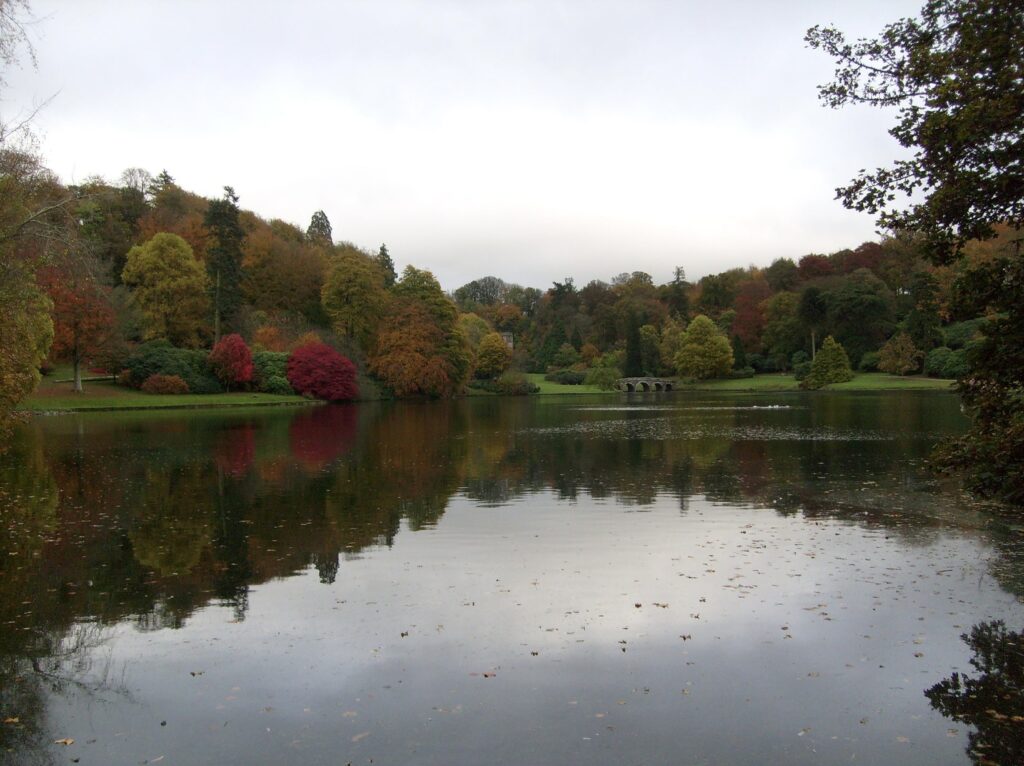
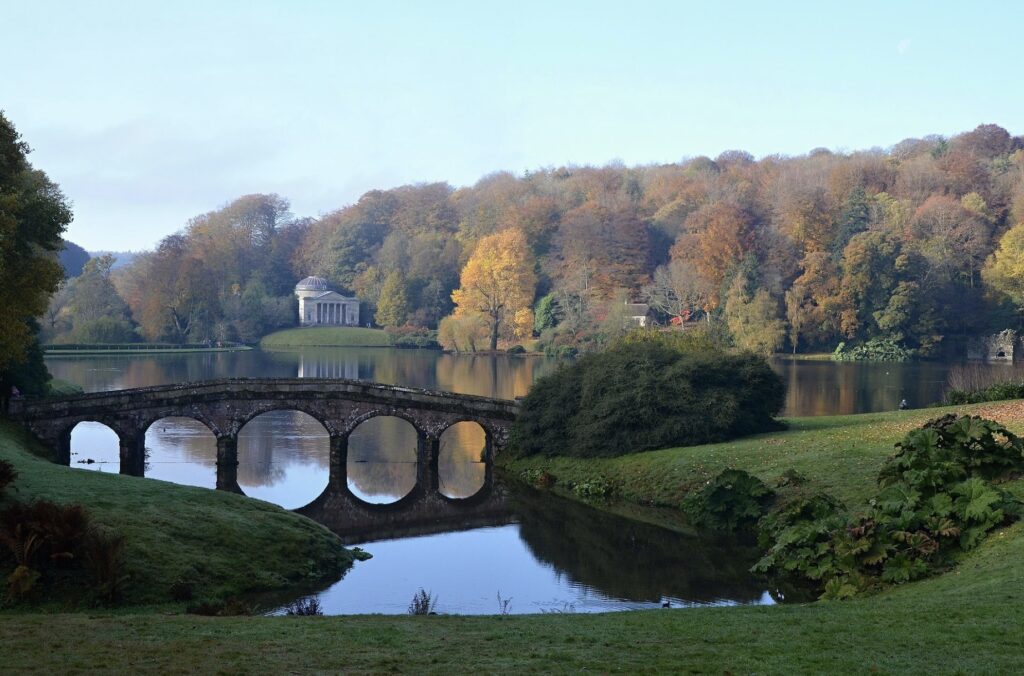
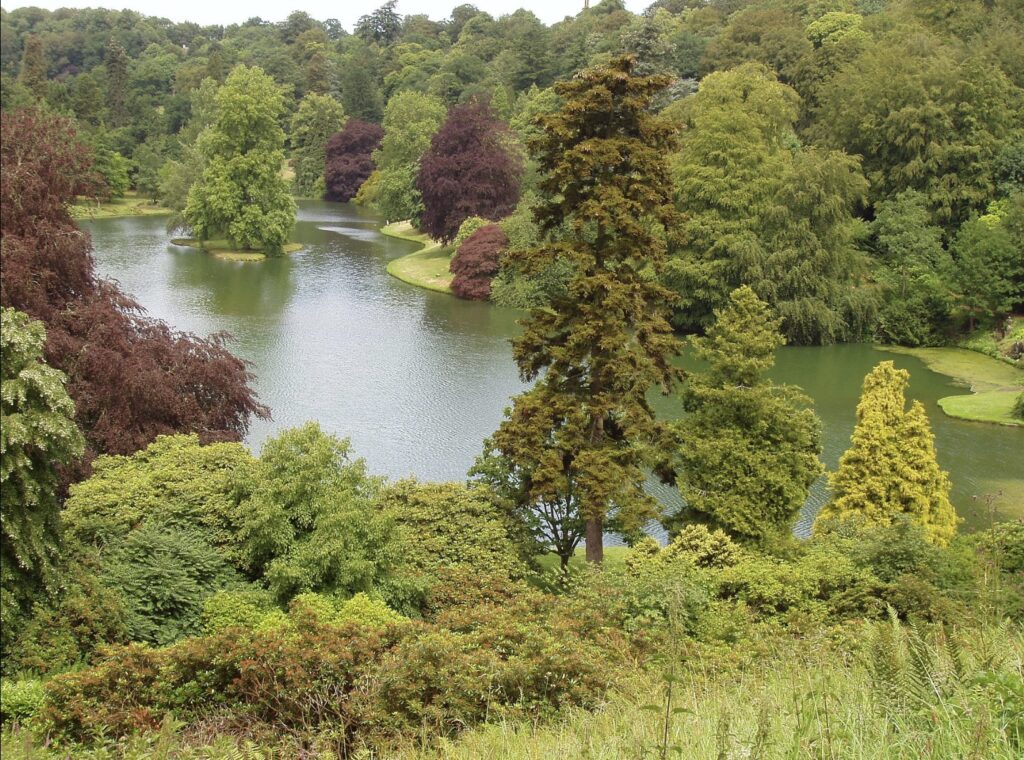
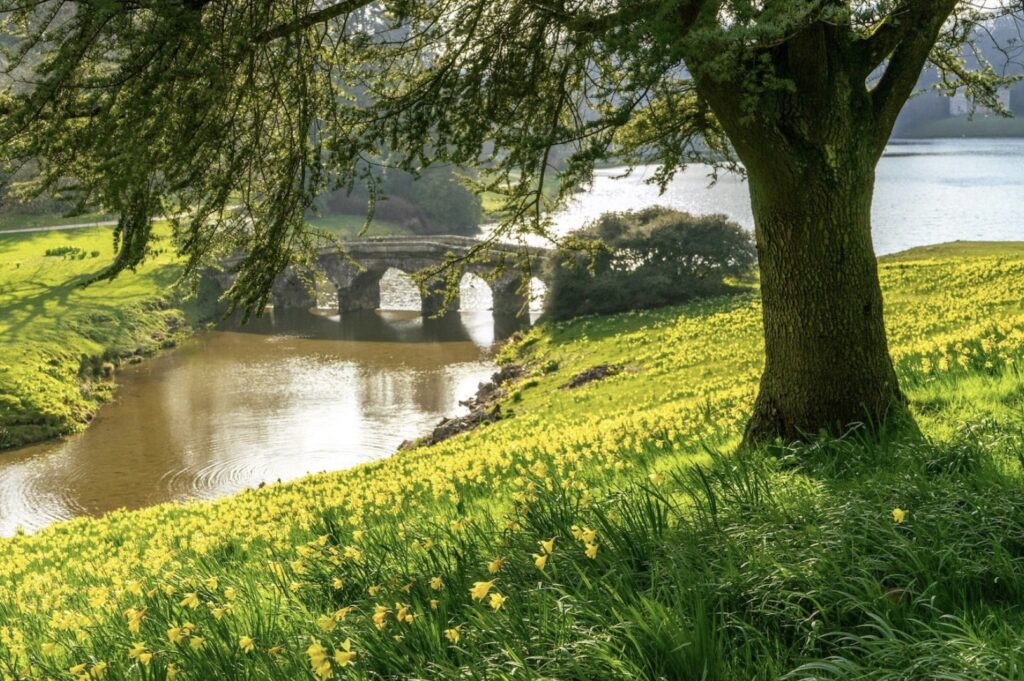
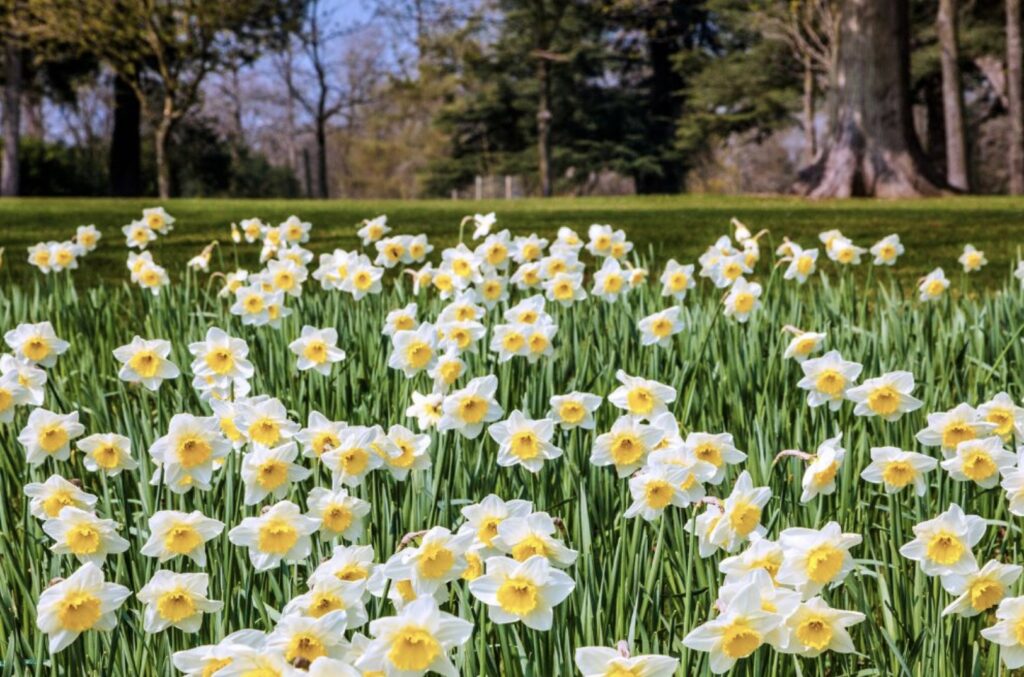
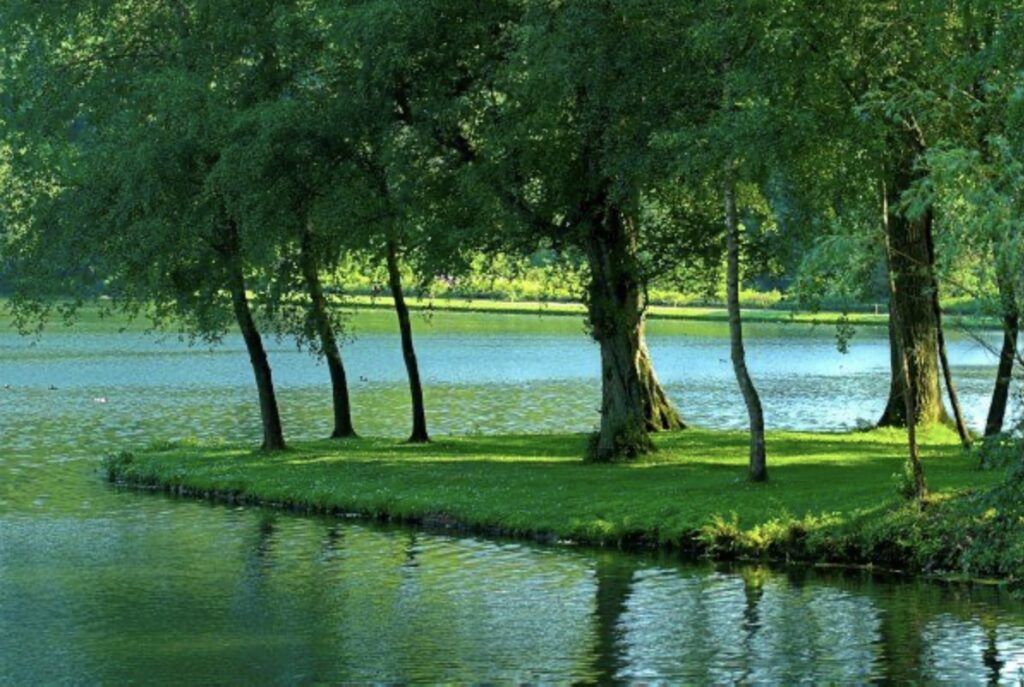
Stourhead is renowned for its carefully designed features and viewpoints, which create a series of picturesque scenes and experiences for visitors. Here are some of the specific features and viewpoints:
- The Pantheon: Modeled after the Roman Pantheon, this classical temple is one of the garden’s most prominent features. It sits on the edge of the lake and houses statues of classical deities. The view from the Pantheon across the lake is one of the garden’s most iconic.
- The Temple of Apollo: Positioned on a hill overlooking the garden, the Temple of Apollo offers stunning views of the lake and the surrounding landscape. This classical temple, inspired by ancient Greek architecture, is a key focal point.
- The Grotto: A mystical cave-like structure featuring a statue of a river god and a nymph. The Grotto offers a cool, shaded retreat with views out to the lake through arched openings.
- The Palladian Bridge: A beautiful bridge inspired by the designs of the Italian architect Andrea Palladio. It spans a narrow part of the lake and provides charming views of the water and surrounding landscape.
- The Gothic Cottage: A whimsical structure that adds an element of surprise to the garden. It is surrounded by trees and plants, creating a secluded and enchanting atmosphere.
- The Bristol Cross: A medieval market cross relocated from Bristol, situated on a grassy lawn near the entrance to the garden. It serves as an interesting historical artifact and adds to the garden’s eclectic charm.
- The Turf Bridge: A simple, rustic bridge covered in grass, blending seamlessly into the landscape. It offers a different perspective of the garden, particularly of the wooded areas.
- The Rock Arch: A picturesque stone arch that frames views of the lake and the surrounding landscape. It adds a sense of drama and romance to the garden.
- The Obelisk: A tall stone monument located on a hill, offering panoramic views of the estate and the surrounding countryside. It serves as a prominent landmark within the garden.
- View from the Lakeside Walk: The circular path around the lake provides numerous viewpoints, each offering different perspectives of the garden’s key features. The reflections of the temples and trees in the water are particularly striking.
- The Ice House: An underground structure used historically to store ice. It is an intriguing historical feature within the garden, often overlooked but adding depth to the estate’s history.
- The Chinese Bridge: A small, decorative bridge with oriental design influences, adding a touch of exoticism and enhancing the garden’s eclectic style.
These features and viewpoints are carefully arranged to create a journey through the garden, revealing new and enchanting scenes at every turn. The interplay of architecture, water, and natural elements makes Stourhead a quintessential example of the English landscape garden style.
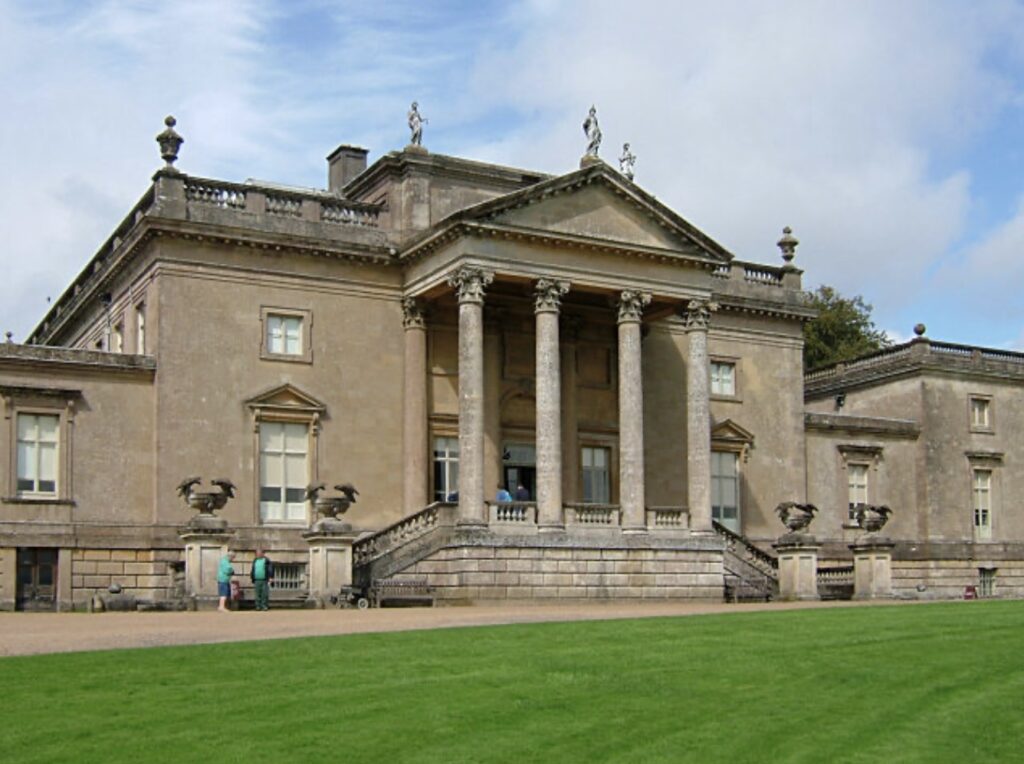
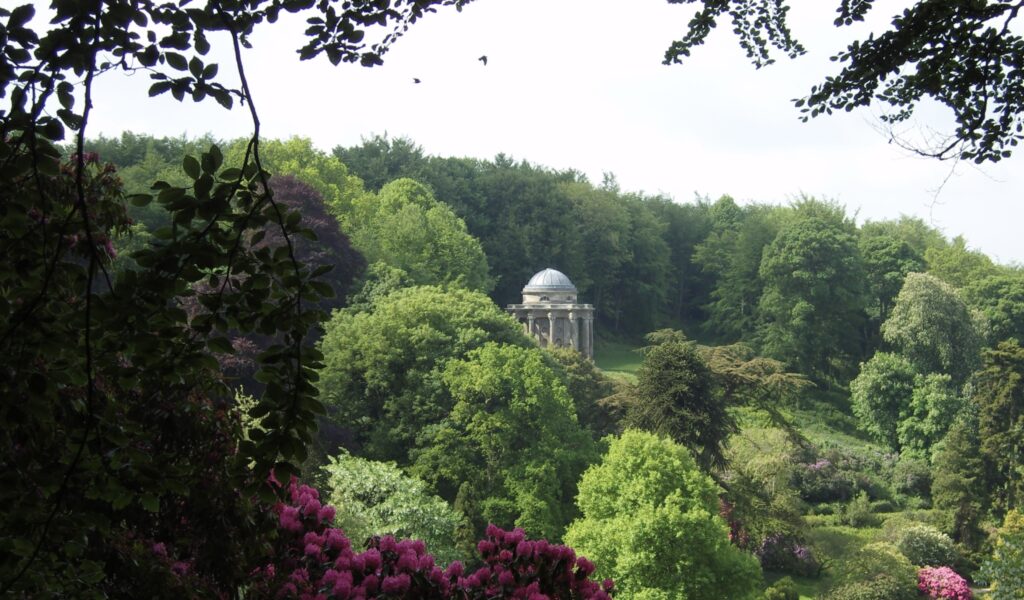
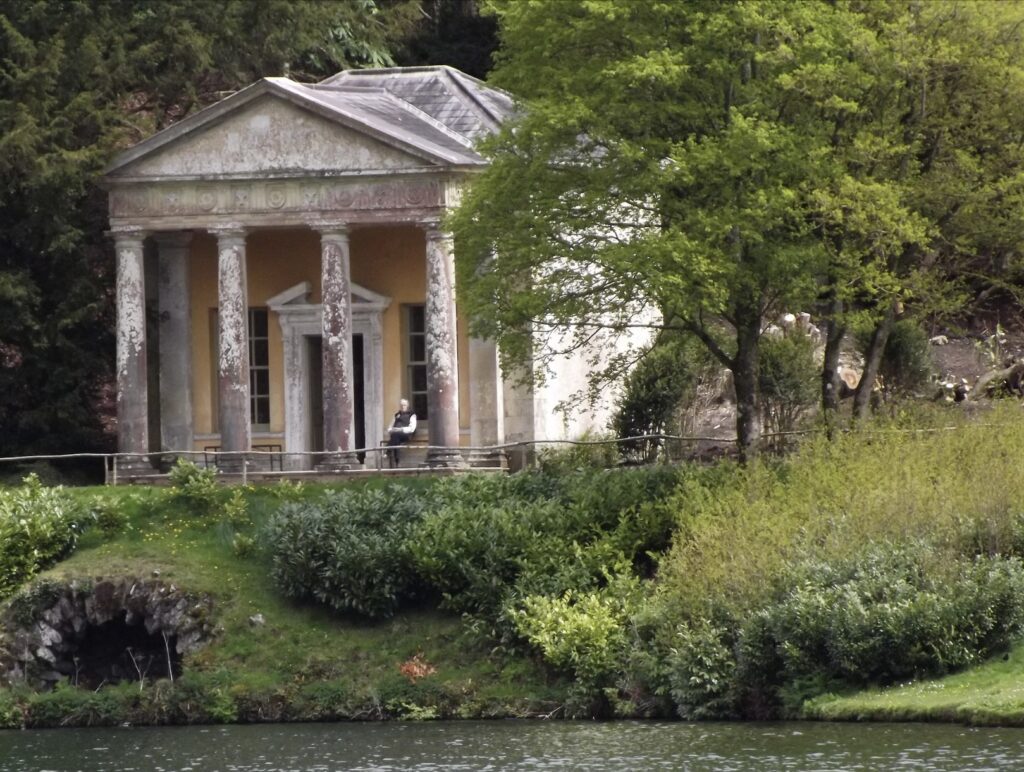
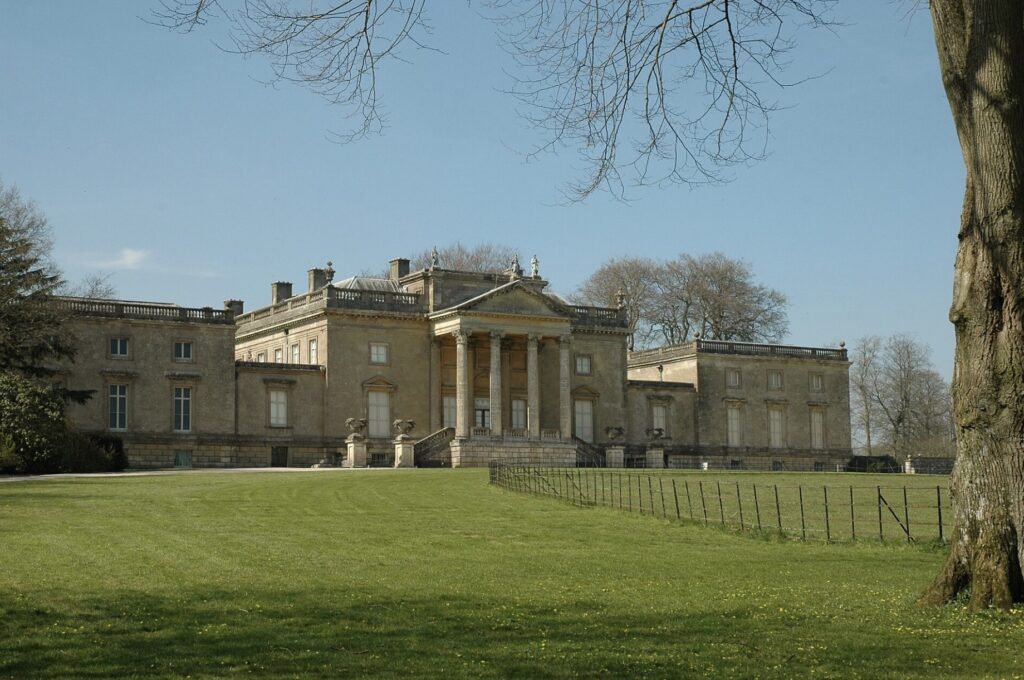
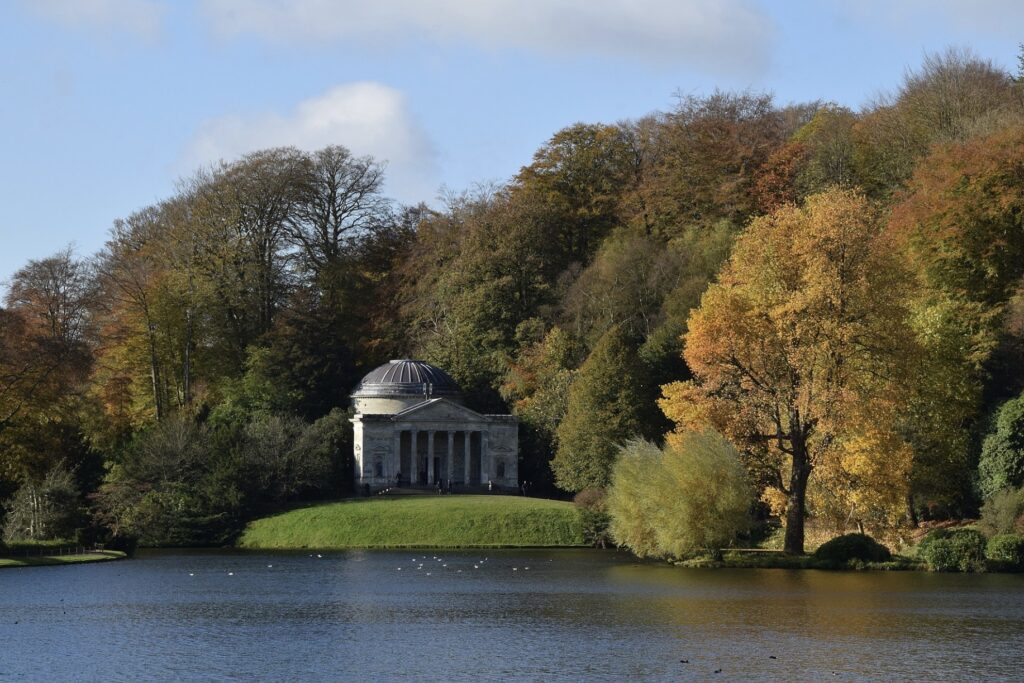
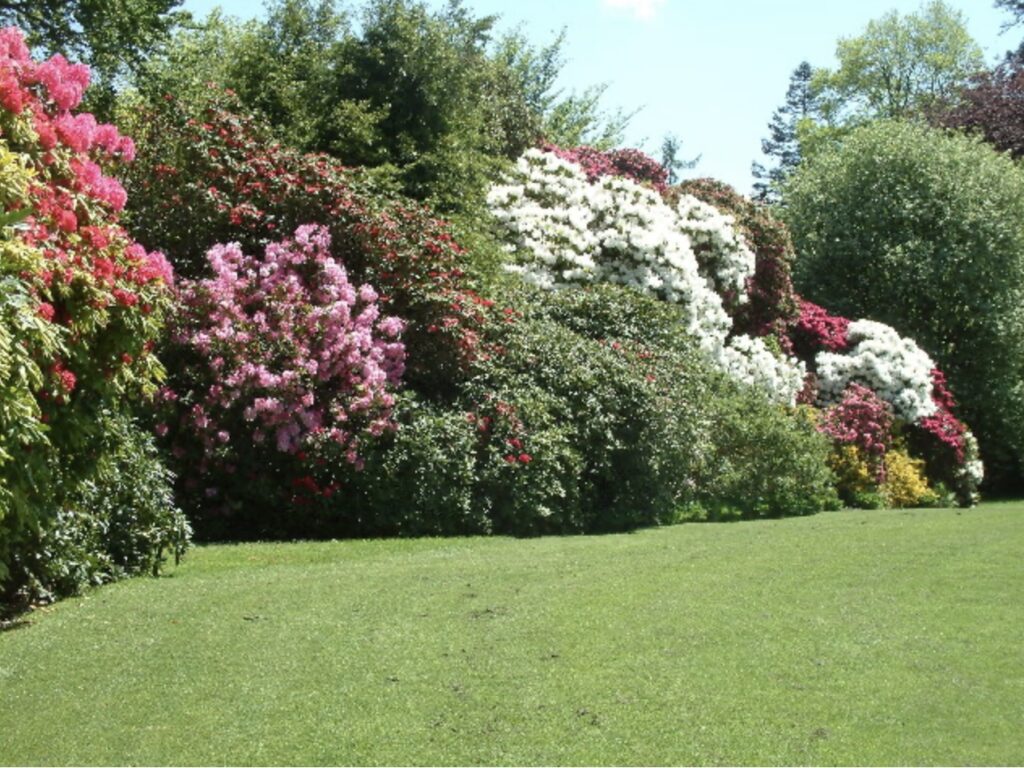
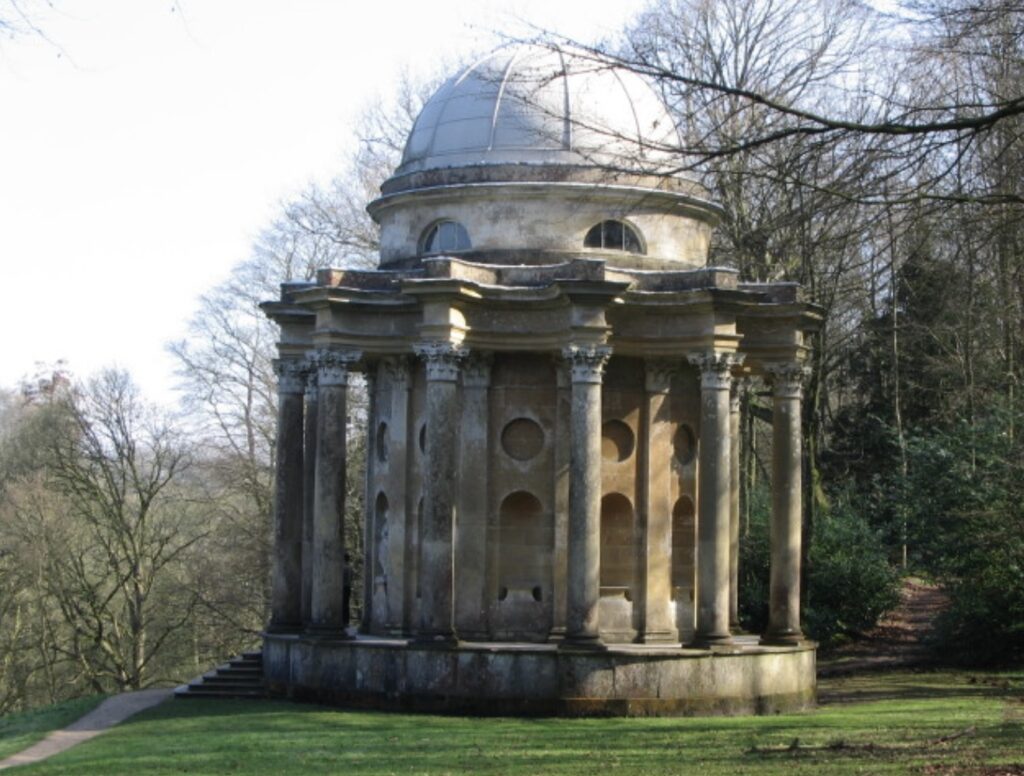
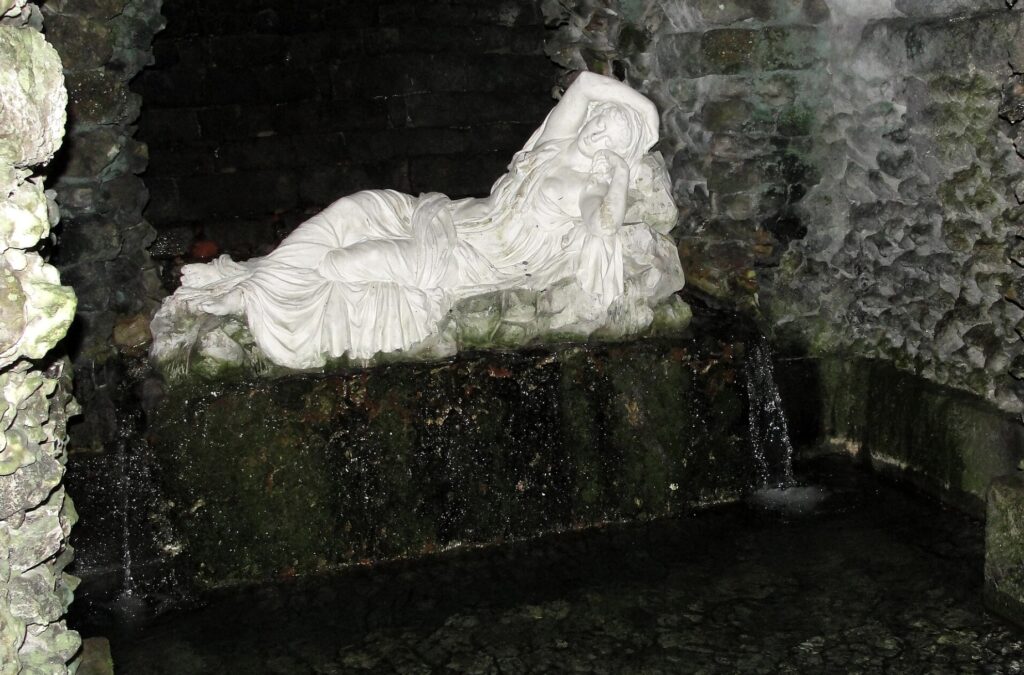
Here’s a suggested one-day walking route through Stourhead to fully appreciate its unique beauty:
Morning
1. Start at the Visitor Centre
- Pick up a map and learn a bit about the history of Stourhead.
- Enjoy a light breakfast or coffee at the café if you wish.
2. Enter the Garden through the Spread Eagle Courtyard
- This will lead you directly into the heart of the estate.
3. The Bristol Cross and The Temple of Flora
- Begin your walk by visiting the Bristol Cross.
- Continue to the Temple of Flora, enjoying the initial views of the lake.
4. Follow the Path to the Pantheon
- Walk along the lakeside path to the Pantheon.
- Take time to explore inside and enjoy the statues and architecture.
- From here, appreciate the iconic view across the lake, capturing reflections of the Temple of Apollo.
Mid-Morning
5. Head towards the Grotto
- Continue along the path to the Grotto, exploring its cool, mystical interior.
- Look out through the arched openings for unique views of the lake.
6. Walk to the Gothic Cottage
- Follow the path through woodland areas to the Gothic Cottage.
- Take in the secluded, enchanted atmosphere and views from the surrounding area.
Lunch
7. Picnic by the Lake
- Find a scenic spot near the lake to enjoy a picnic lunch.
- Use this time to relax and take in the serene landscape.
Early Afternoon
8. Visit the Temple of Apollo
- After lunch, head up the hill to the Temple of Apollo.
- Enjoy the panoramic views of the garden and the countryside beyond.
9. Explore the Palladian Bridge
- Walk down towards the Palladian Bridge.
- Take in the classical design and the views it offers of the lake and gardens.
Mid-Afternoon
10. Discover the Rock Arch
– Continue towards the Rock Arch for a dramatic, framed view of the landscape.
– This is a great spot for photography.
11. Walk to the Ice House
– Visit the Ice House to explore this interesting historical feature.
12. Explore the Chinese Bridge
– Head towards the Chinese Bridge, appreciating its unique design.
Late Afternoon
13. Climb to the Obelisk
– Make your way up to the Obelisk for panoramic views of the estate.
– Spend some time here to fully appreciate the vastness and beauty of the landscape.
Evening
14. Return to the Visitor Centre
– Head back to the visitor centre through the Spread Eagle Courtyard.
– Browse the gift shop or enjoy a refreshment at the café before you leave.
Tips for Appreciating Stourhead’s Unique Beauty:
- Take Your Time: Don’t rush. Spend time at each viewpoint and feature, allowing yourself to fully take in the surroundings.
- Observe the Details: Notice the interplay of light and shadow, reflections in the water, and the variety of plant species.
- Use All Senses: Listen to the sounds of nature, feel the textures of different surfaces, and take in the scents of flowers and foliage.
- Photography: Capture the beauty with your camera, focusing on both wide landscapes and small details.
- Reflect on History: Think about the historical context and the vision behind the garden’s design.
- Engage with Staff: Talk to the National Trust staff and volunteers for insights and stories about the garden.
This route will ensure you experience the highlights of Stourhead and appreciate its intricate design and natural beauty.
